Major Design Advanced Landscape Architecture

Design & Technical Report


Major Design Advanced Landscape Architecture













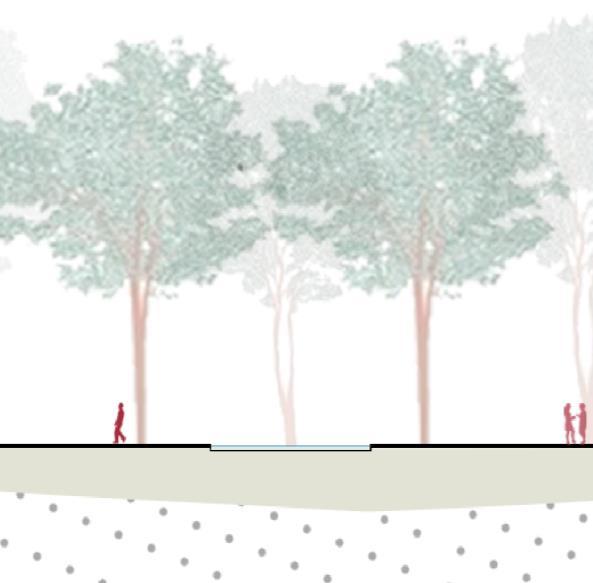









Mound with pathway





Detailed Area – Community Garden
Rendered Plan




Scale 1:50


Carex
Pendula Pendulous Sedge 2-4 feet 474
Escallonia Rubra Red Claws 3-5 feet 507
Hebe Hebe spp 1-6 feet 540


Colocasia Esculenta Elephant Ears 3-6 feet 201
Olearia Subspiicata Daisy Bush 3-6 feet 87
Vinca Major Big Leaf Periwinkle 6-12 inches 669

Trim back in early spring. Remove dead foliage. Divide clumps every 3-4 years if overcrowded.
Prune lightly after flowering to maintain shape. Remove any frost-damaged growth in spring.
Light pruning after flowering. Protect from severe frost in colder regions.
Cut back foliage in autumn. Provide winter protection in colder climates.
Prune after flowering to maintain compact shape. Remove dead or damaged branches.
Control spread by trimming back regularly. Remove invasive growth.





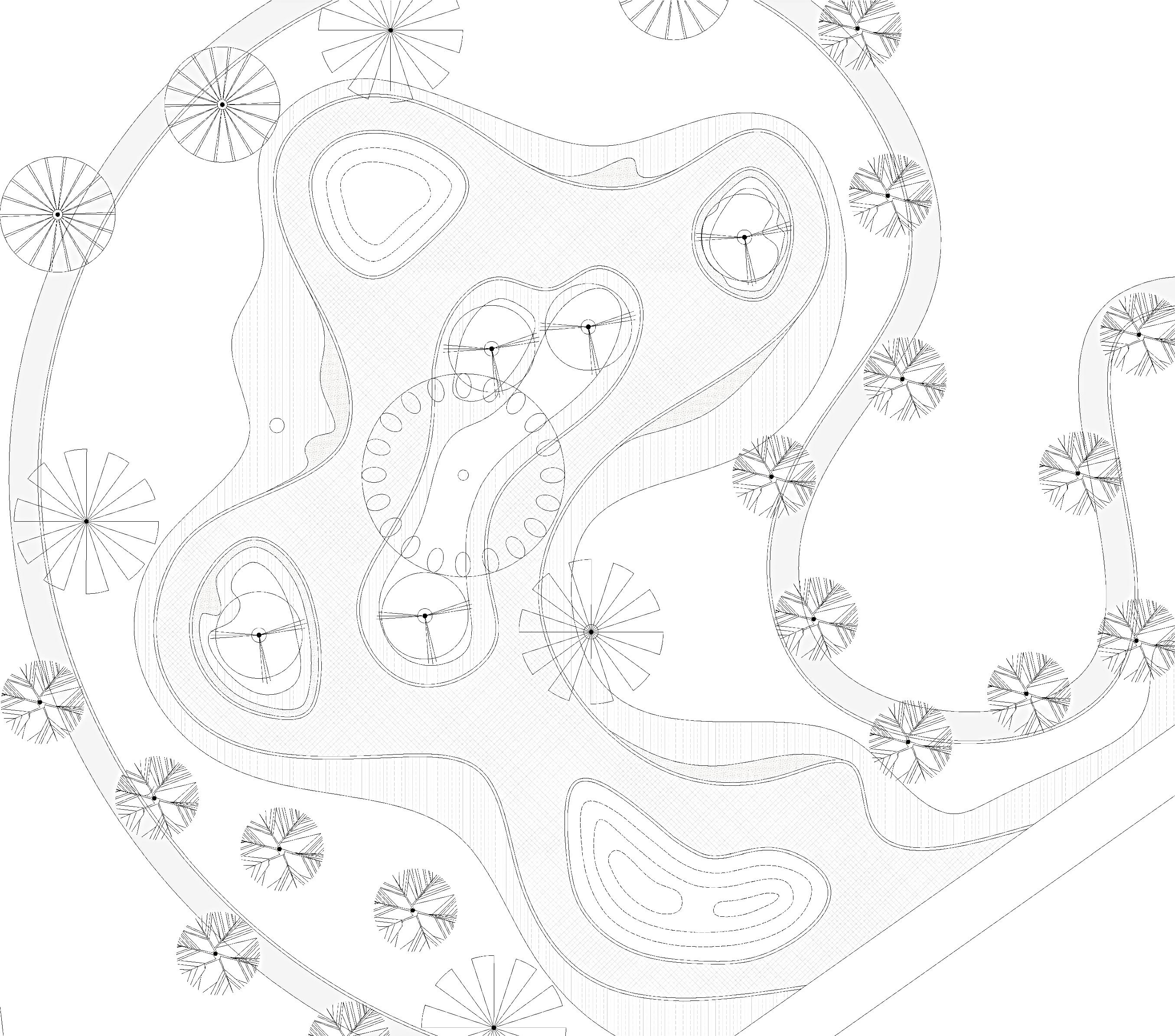





Betula Pubescense Red Birch 10-20 meters 19 Prune in late winter or early spring. Minimal pruning required; remove dead or crossing branches.
Betula Pendula Silver Birch 15-25 meters 4 Prune in late summer to early autumn. Avoid heavy pruning.
Salix Alba White Willow 8-12 meter 4 Prune in late winter. Can be pollarded or coppiced to manage size.
Carpinus Betulus Hornbeam 4-8 meter 5 Prune in late winter or early spring. Suitable for hedging or can be left to grow naturally.
Acer Campestre Field Maple 15-20 meters 1 Prune in late autumn to winter. Remove dead, diseased, or crossing branches.


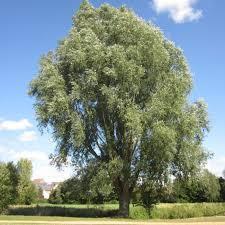
General care notes:
1. Regular weeding of planting beds as needed.
2. Monitor soil moisture and water during dry periods, especially for newly planted specimens.
3. Apply mulch annually to conserve moisture and suppress weeds.
4. Assess plant spacing periodically and thin if overcrowded.
5. Allow herbaceous perennials to die back naturally over winter for ecological benefits, unless otherwise specified.
6. Adjust care based on specific growing conditions and local climate.


or
Legend Material
Raised Granite Edging

Mixed Gravel



Sandstone Herringbone Pathway
Perennial Ryegrass Dwarf Ryegrass
Loamy Soil



Compacted Stone Walkway Benches
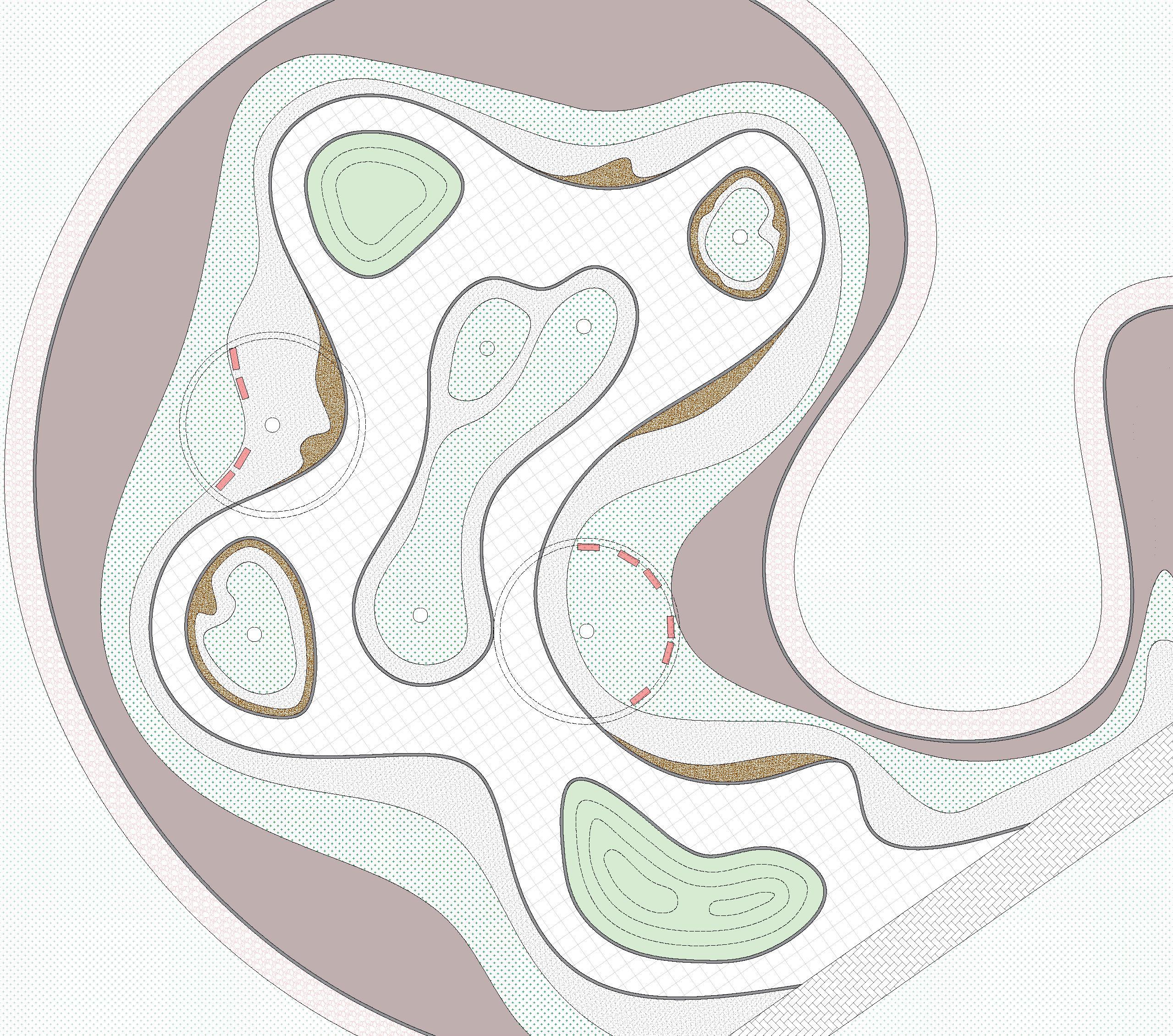
Scale 1:250

Surface drain
Raised granite edging (150 x 200 mm)
Formation & Sidefill
Large concrete pavers
Sub base Composition
520 x 600 mm
Drain channel

Scale 1:20

A
Large concrete avers with set slope towards drain
Pressure Treated Ledger

Concrete Footing
Compacted Aggregate
Compacted Soil
Aggregate

Edge of pavement or kerb-cut 1” drop from the edge of pavement
2” woodchip mulch or aggregate
6” polishing layer
Ponding depth varies
Stone Walkway 1” drop from the edge of pavement
3” coarse compost in ponding area
18” high performance bioretention mix
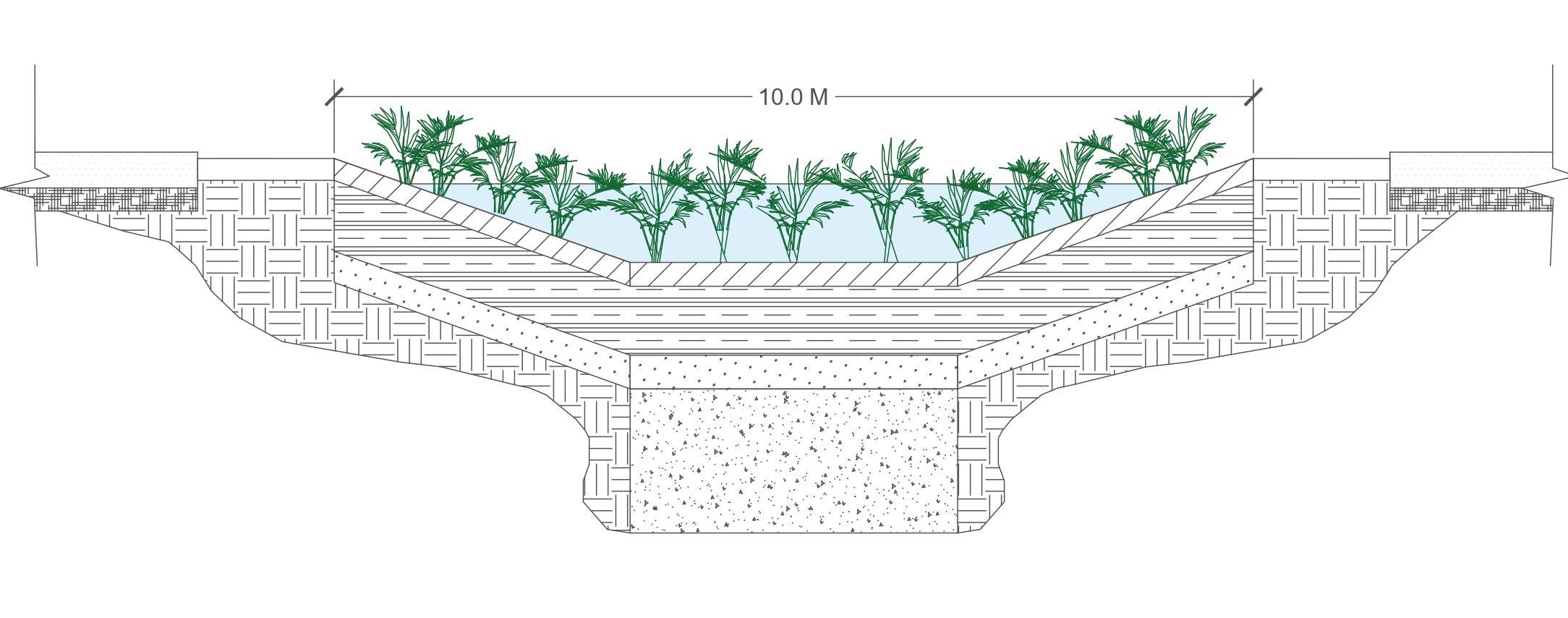
Mineral aggregate bottom width to match BSM bottom width
2” woodchip mulch or aggregate
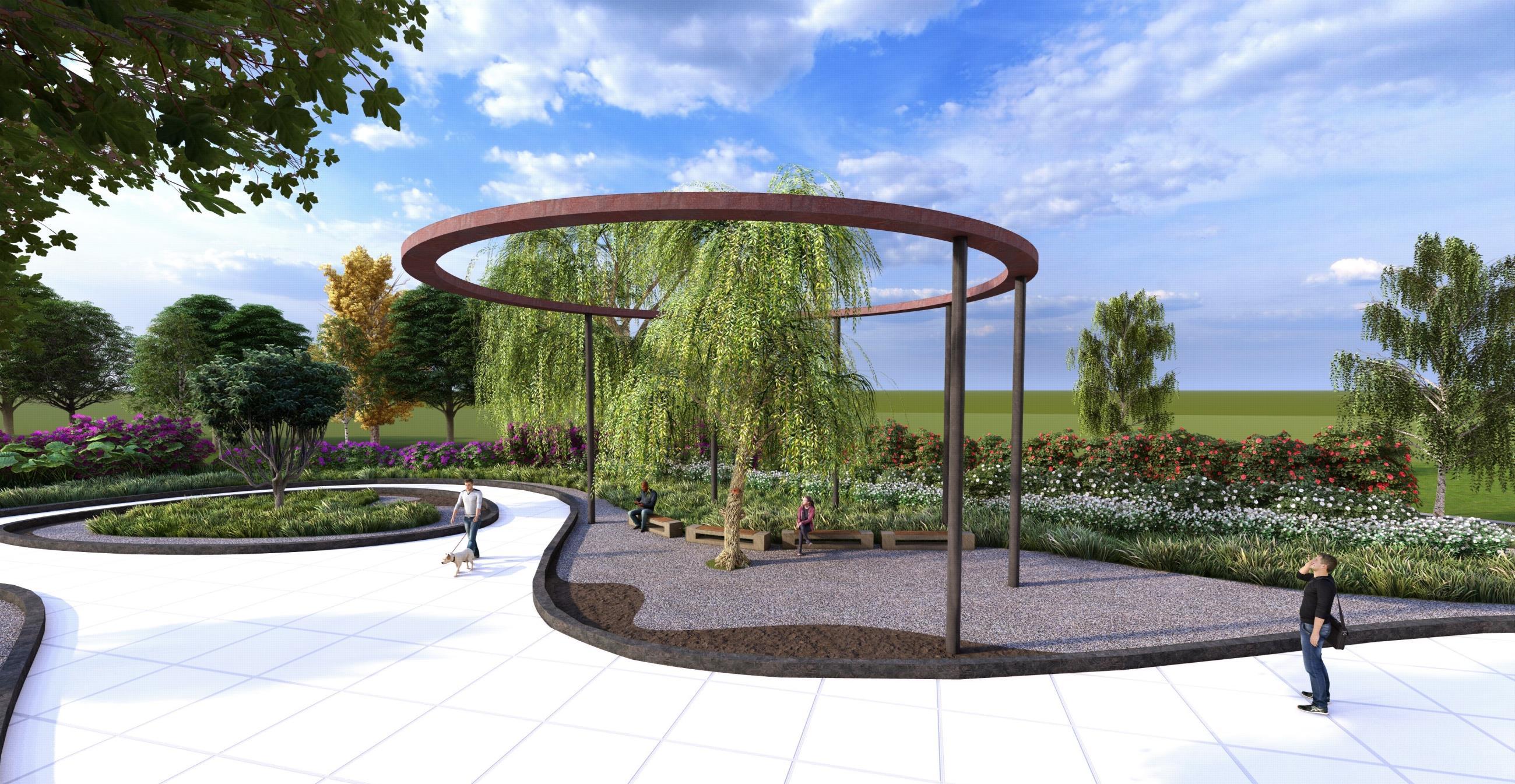



1. de Bell, S , Graham, H , Jarvis, S , & White, P (2017) The importance of nature in mediating social and psychological benefits associated with visits to freshwater blue space. Landscape and Urban Planning, 167, 118-127.
2. Wheeler, B W , Lovell, R , Higgins, S L , White, M P, Alcock, I , Osborne, N J , ... & Depledge, M. H. (2015). Beyond greenspace: An ecological study of population general health and indicators of natural environment type and quality
International Journal of Health Geographics, 14(1), 17.
3. Yang, H , Chen, T , Zeng, Z , & Mi, F (2020) Does urban green space justly improve public health and well-being? A case study of Tianjin, a megacity in China. Journal of Environmental Management, 271, 111020.
4. Gehl, J (2011) Life between buildings: Using public space Island Press
5. Thompson, C. W., Roe, J., Aspinall, P., Mitchell, R., Clow, A., & Miller, D. (2012). More green space is linked to less stress in deprived communities: Evidence from salivary cortisol patterns. Landscape and Urban Planning, 105(3), 221-229.
6. Carmona, M (2019) Place value: Place quality and its impact on health, social, economic and environmental outcomes Journal of Urban Design, 24(1), 1-48
7. Grahn, P., & Stigsdotter, U. K. (2010). The relation between perceived sensory dimensions of urban green space and stress restoration Landscape and Urban Planning, 94(3-4), 264-275.
8. Hartig, T , Mitchell, R , De Vries, S , & Frumkin, H (2014) Nature and health
Annual Review of Public Health, 35, 207-228.
9. Project for Public Spaces (2018) Placemaking: What if we built our cities around places? Retrieved from https://www pps org/article/what-is-placemaking
10.Lachowycz, K , & Jones, A P (2013) Towards a better understanding of the relationship between greenspace and health: Development of a theoretical framework. Landscape and Urban Planning, 118, 62-69.
11.Wolch, J R , Byrne, J , & Newell, J P (2014) Urban green space, public health, and environmental justice: The challenge of making cities 'just green enough'. Landscape and Urban Planning, 125, 234-244
12.Korpela, K., Borodulin, K., Neuvonen, M., Paronen, O., & Tyrväinen, L. (2014). Analyzing the mediators between nature-based outdoor recreation and emotional well-being Journal of Environmental Psychology, 37, 1-7
13.Kuo, F. E., & Sullivan, W. C. (2001). Environment and crime in the inner city: Does vegetation reduce crime? Environment and Behavior, 33(3), 343-367
14.Marcus, C. C., & Sachs, N. A. (2014). Therapeutic landscapes: An evidencebased approach to designing healing gardens and restorative outdoor spaces John Wiley & Sons.
15.Kabisch, N , van den Bosch, M , & Lafortezza, R (2017) The health benefits of nature-based solutions to urbanization challenges for children and the elderly – A systematic review. Environmental Research, 159, 362-373.









